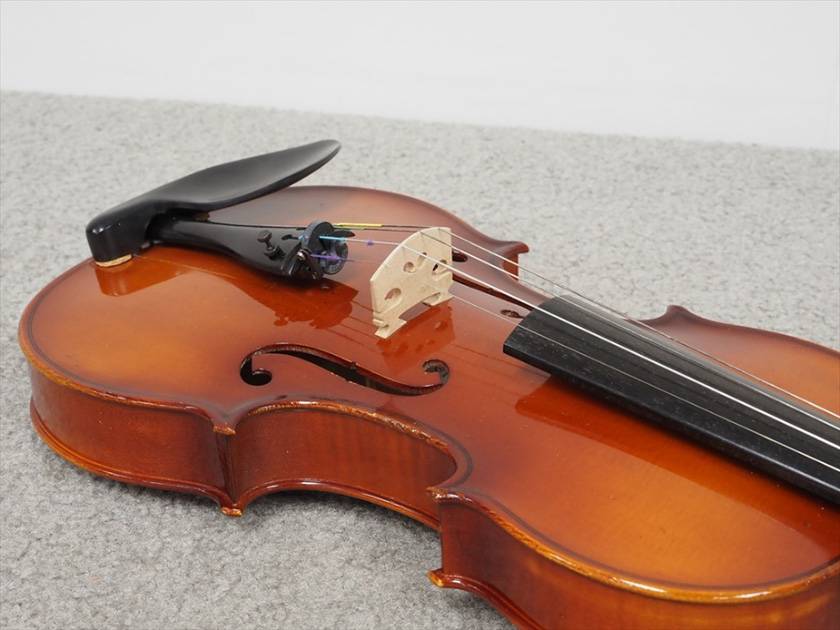
Although the Chinese character for a violin bridge is 駒 (koma), which means "a small piece of wood to put between things" in Japanese, in English, the word is literally "bridge". This little wooden structure supports the strings on the instrument and determines the standard pitch.In other words, it determines the pitch of the open strings.
When the strings are open, they touch the instrument at four points: the pegs, the nut, the grooves on the bridge, and the anchor of the tailpiece.
Among these, it’s easy to imagine that the piece has a great influence on the sound when the pressure of the strings transmits the strings’ vibrations to the body surface plate regardless whether or not the left hand is pressing down on them.
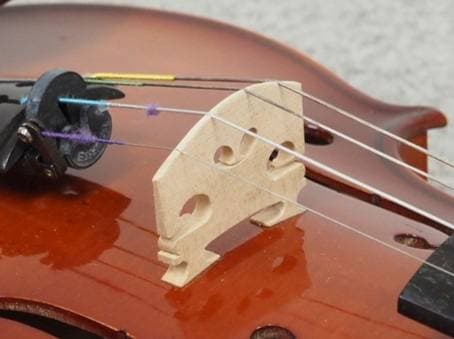
Did you know that there are different types and ranks of materials used for this part?
Of course, there are differences in price as well, which I would like to introduce.
There are several manufacturers in circulation, but here I will use the example of the brand, Aubert, which has long been a worldwide standard and well-known brand.
"Aubert" is Aubert Lutherie, which is a French name, so in Japanese, it’s better to say it as, オーベルト (Oh-beruto). If you are fluent in French, you may think, "Come again?” I am sorry if you are fluent in French, but please forgive me.”In the past, I used to say "O-beruto," but recently everyone seems to have adopted the French pronunciation (basically, the consonant at the end of a word should not be pronounced), which is オベール _Obe-ru".
Aubert Lutherie is a stringed instrument company located in the town of Mirecourt in eastern France, a town that flourished in the 19th and 20th centuries as the center of mass production of stringed instruments. Mirecourt is an important town in the history of stringed instruments, like Markneukirchen and Mittenwald in Germany.
There are a wide variety of Aubert bridges for violins, violas, cellos, and double basses, depending on the instrument type and size, but if I’m strictly speaking about violins, there are four main types.
Aubert NO.8L De luxe
There are not many occasions when you need to replace a violin’s bridge.
If you are going to go to the trouble of replacing this piece, this is a good choice. The Aubert's highest grade bridge is made of seasoned wood and the DE LUXE stamp is a sign of trust. There are different types of foot widths from 40.5 to 43 mm.
The foot width is selected based on the size of the piece originally attached to the instrument, but the size may be changed in consideration to its relative position of the sound post. Please consult carefully with a luthier before you make these kinds of technical decisions.
Aubert No.8 Luxe
This is Luxe; it is the second rank.
I’m often asked "What is the difference?” The answer is that there is a difference in the quality of the materials. The price is a little lower and the foot width is only 41.5mm. Luxe is a good enough material.
Aubert No.7 Mirecourt
Mirecourt is the most commonly used type because of the balance between quality of materials and price.
I can hear you saying, "They all look the same after being shown three different types so far. Since they are made of the same material and have the same shape, a clear distinction can be made by their stamps.
It is quite difficult to distinguish the types from the back.
Aubert No.5 Etude
Etude is the most affordable of Aubert's bridges.
When you look at the Etude, you can clearly see that the bridge's color is white. This may be due in part to the exposure of the photo, but when the bridges are actually placed side by side, the color of the Deluxe, Luxe, Mirecourt, and Etude bridges become whiter in color. This seems to be due to the material dying and becoming darker in color over the years of seasoning. Even when they are scraped, the color is the same all the way through, so it does not seem that the surface is tanned or anything like that.
I hope you have an understanding that there are different types of bridges depending on the material.
If you are looking at the four images and comparing the pieces on your own instruments, you may have noticed that mine has a Mirecourt, it’s not an Aubert, and so on.
"The bridges are different in shape from the one on my instrument! Why?"
"The shape of the bridge is determined by the processing."
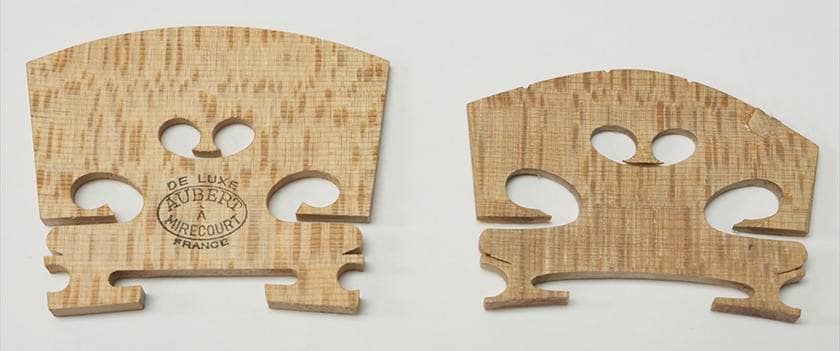
This is a new, unprocessed Aubert Deluxe bridge (left) and a bridge of the same class that was actually attached to the instrument after processing.
The bridge is completed as a brdige only after processing to match the instrument to which it is attached, including the thickness of the bridge, fitting the feet, R (roundness of the top surface), and molding of each part. In addition, the bridge on the right has a preventive bridge-cutting sleeve applied to the E string.
What changes when you change the bridge?
Aubert Deluxe bridges are definitely made of good materials, but I cannot say that changing a bridge on a Deluxe will always improve the sound. In most cases, the results are good (I have received feedback that the sound is better or that it’s easier to play), but it’s also possible that you are just soaking up the atmosphere of a beautifully finished piece with a beautiful grain. I think that is important because that is one major factor in enjoying the instrument.
As you can understand, the sound of an instrument is a synthesis of other parts such as the sound posts, chin rest and tailpiece, adjustments to various parts (pegs and top nut), the material of the instrument itself, and the player's playing habits. In such a situation, it is certain that choosing Aubert Deluxe bridges has no small possibility to improve the sound and playing comfort of the instrument.
The actual installation work is basically done by finding a repair workshop and asking them to repair the bridges.
Even if you decide to replace a bridge, it will take a lot of time and effort to find a workshop to replace the existing bridge. Some workshops may recommend that you use bridges that they have in storage.
By the way, the bridge of stringed instruments are actually made to resemble the "human form".
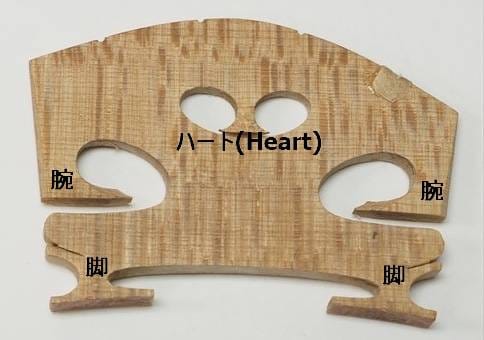
This is a small part of the story that makes sense when I tell it, but I think it is a device to reduce the mass of the bridge itself by shaving the heart and inserting it, and to make the bridge itself sound better, including the subtle designs. Although it is made of a slender piece of wood, it is an important part that withstands the tension of the strings and makes your instrument resonate loudly. When tuning the strings, please check the posture of the bridge and correct it from time to time to prevent bending or warping.
⇒ Lessons for Beginners "Tuning and checking the tilt of the bridge as a set"
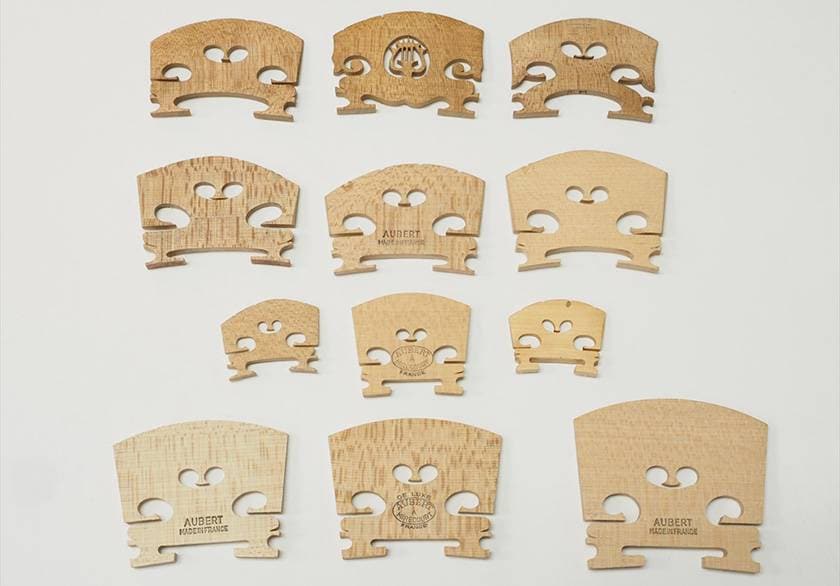
Finally, please take a look at the various bridges. The top row is the bridges removed from an old Bohemian instrument, the second row is a variety of normal Aubert bridges, the third row is fractional bridges, and the middle is new bridges.
The fourth row is new bridges, but the big one on the right is for viola.
You may find this blog useful when it is time to change bridges, which may happen someday.
Enjoy your violin!





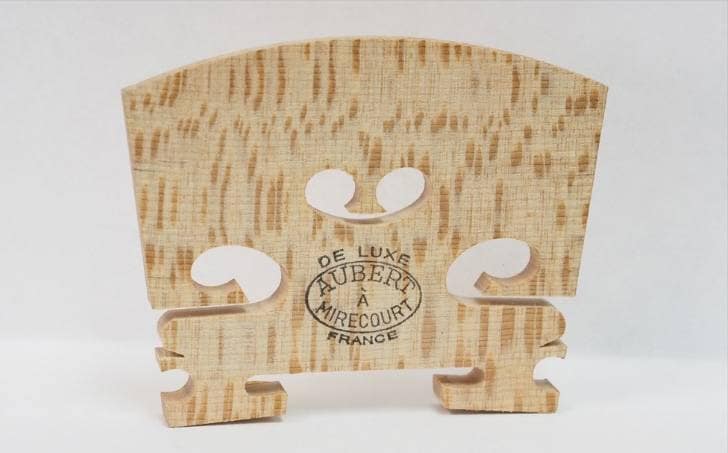
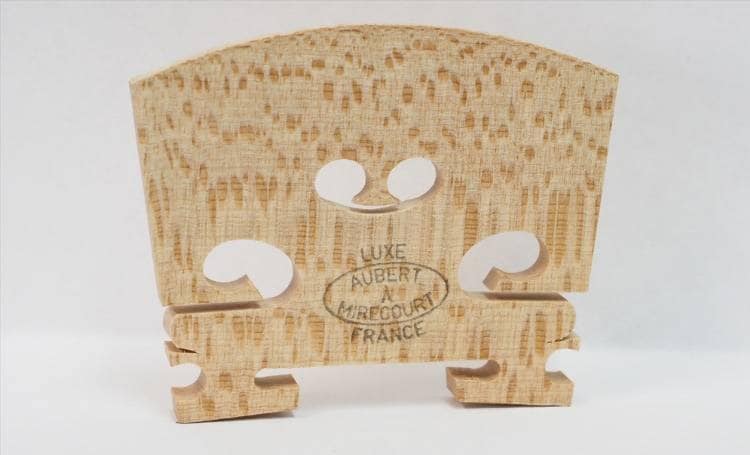
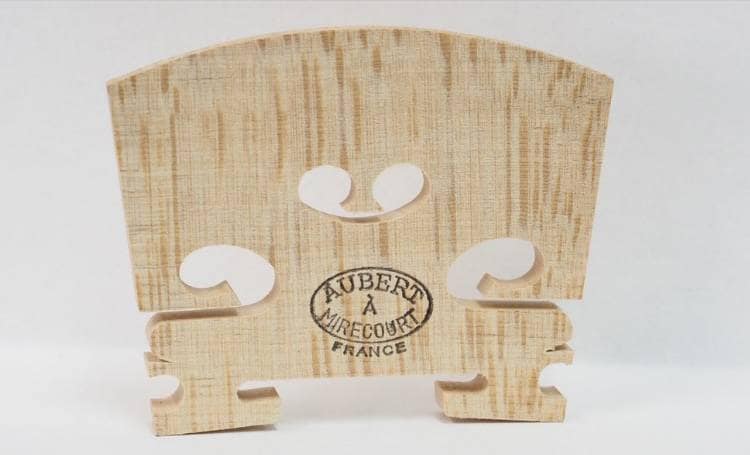
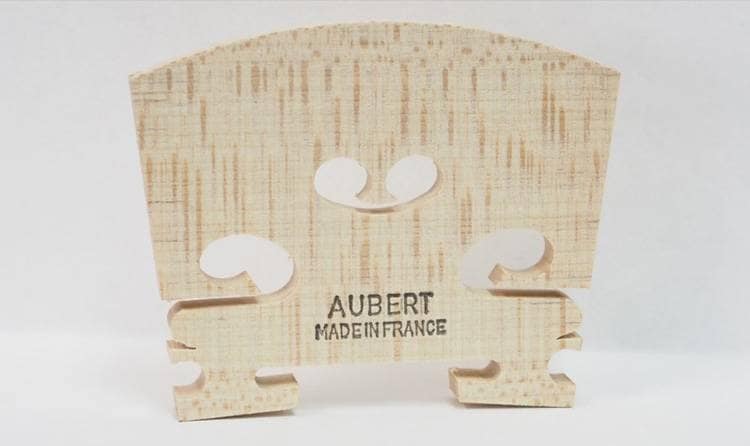

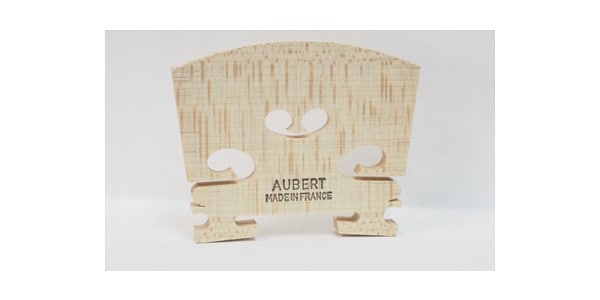
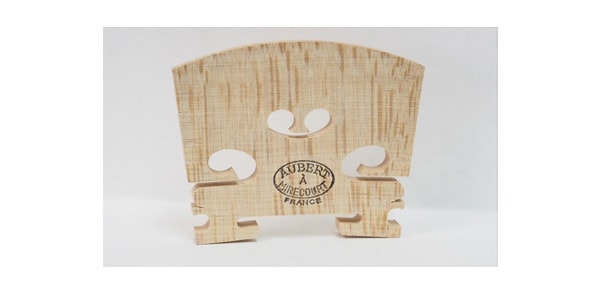
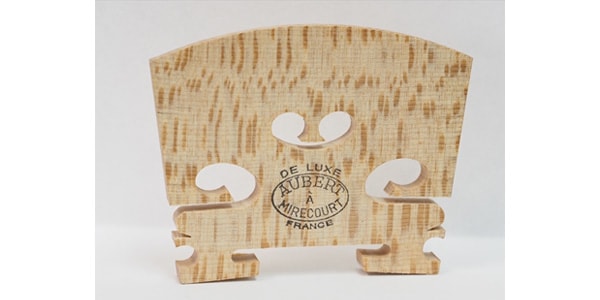

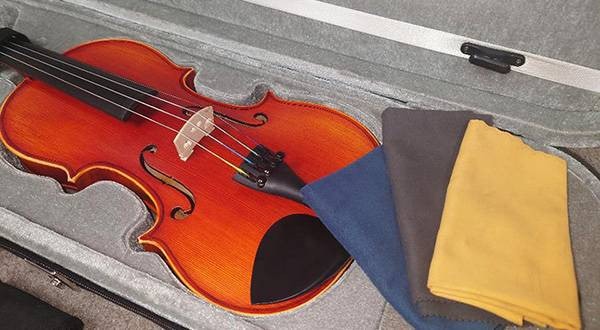
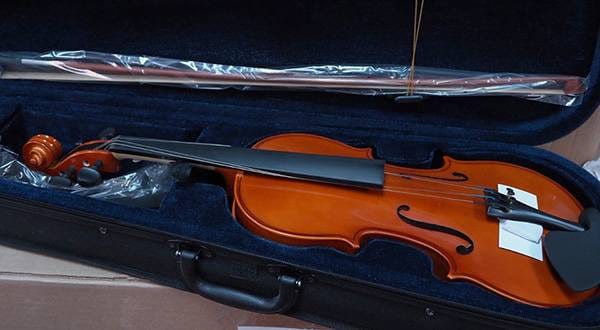
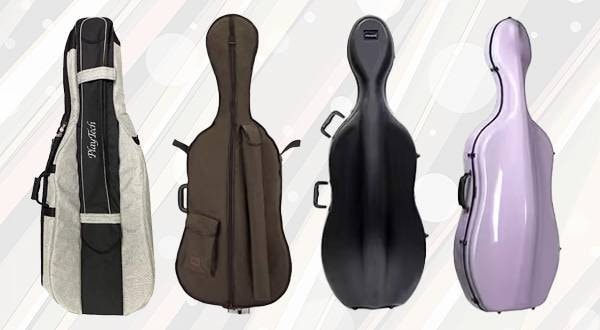
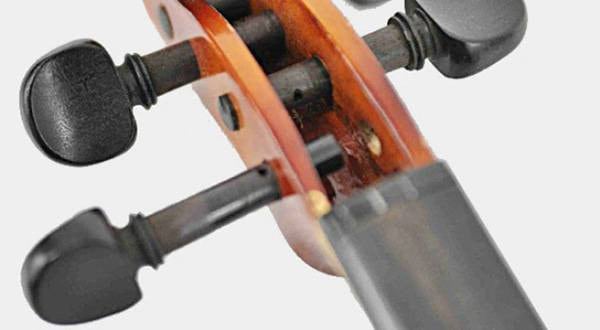
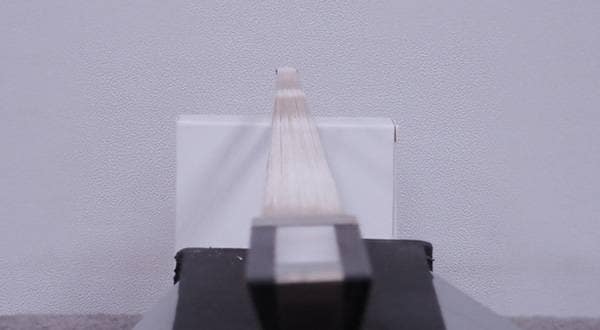
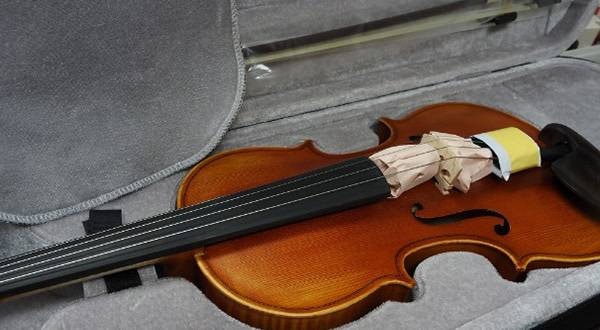
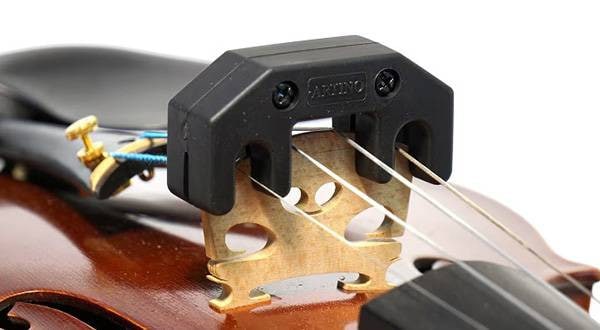
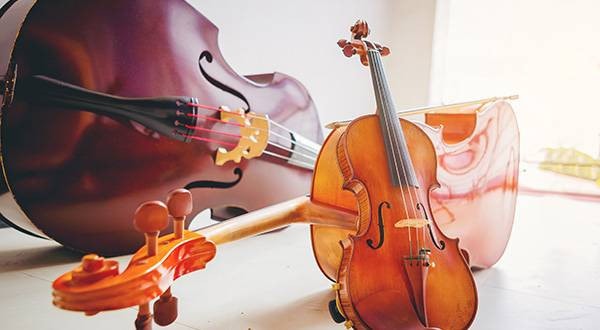
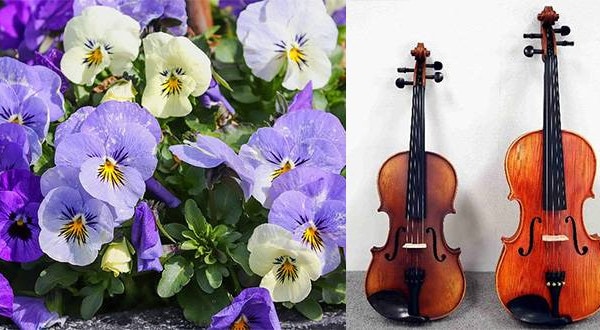


 チェロの調弦 チューニング
チェロの調弦 チューニング
 チェロの各部名称と置き方
チェロの各部名称と置き方
 バイオリンの弦交換
バイオリンの弦交換
 バイオリン 弓の各部名称と松脂
バイオリン 弓の各部名称と松脂
 バイオリンの調弦 チューニング
バイオリンの調弦 チューニング
 バイオリンの基本的な取り扱い
バイオリンの基本的な取り扱い















